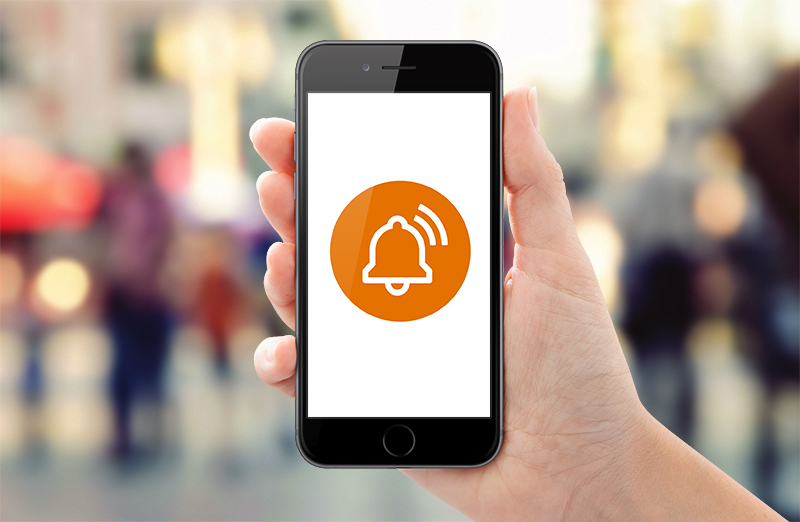The Benefits of Mobile Banking Alerts

By Britton Troyer, Loan Development Officer
In a busy world, life’s little alerts can be very helpful. From getting up at just the right time to changing the battery on the fire alarm to ensure it’s still providing you the safety you expect. Banking is no different. In fact, it can be even more important, because your bank account, the transactions that run through it, and the security of it are personal.
That’s why more and more banking institutions are incorporating alerts and push notifications into their offerings. The nice thing about these alerts is you control them. You can determine what you want to know about, what you don’t, and how you want to receive them.
Email and text notifications are two of the most popular alerts customers opt-in to. And there are many “types” of alerts you can receive, from friendly transaction notices that let you know what’s happening with your account to security alerts that ensure you know what’s going on—and give the bank a sense of security if activity is happening with your account that is out of your normal behavior.
Let’s dive into the most common customer transaction alerts and push notifications.
Available Balance & Cleared Checks
Your available balance defines what is “available” to you at any given time. This balance can be lower than your actual account balance because the bank may still be collecting funds from third-party deposited checks. Once those checks clear, they will become part of your available balance, which is typically a reflection of what you can receive in cash withdrawal from your account. Alerts to let you know when a check has cleared through your account are also an option.
Debit or Deposit Transactions
This alert allows you to be notified when a deposit or debit has been made to or from your account. It’s a popular alert for customers using a mobile device with a built-in camera to deposit checks—alerting you when the deposit has been received or if it has not been accepted for some reason. Debit and deposit alerts can usually be set up for over or under a certain dollar amount, so you can be alerted to the transactions you really care about.
Failed Transactions or NSF Notifications
If your account falls into a negative balance, this alert can help you gain immediate awareness, so you can avoid overdraft fees and bounced checks. An NSF can be an outcome of failed transactions, either deposits that didn’t go through or couldn’t be processed, allowing you to correct the situation before the NSF notifications hit.
A High or Low balance Amount
A low balance alert notifies you when your account falls below a predetermined amount. This alert helps avoid overdrawing your account, overdraft fees, card declines and bounced checks.
A high balance alert is helpful in situations where you are waiting for a large deposit or transfer to come through—notifying you once the funds hit your bank account.
Online Transfers and Pending ACH Transactions
As banking becomes more technologically advanced, transfers can not only be made between your personal accounts, but between third parties—in the form of a transfer or ACH transaction. Knowing when these transactions are affecting your account keeps you in the know about expected deposits and withdrawals.
Login Attempts or Failures
Login failures can simply be an outcome of you forgetting your password or login credentials, or, on a more serious note, someone trying to hack your account. Allowing these alerts can help you avoid security breaches or unwanted users looking to gain a line of sight into your personal information and funds.
Password, Email, User Changes or Security Question Changes and Updates
All of these activities are a direct correlation to the security of your account. They are put in place to provide you extra layers of protection, and turning these alerts on ensures that if these attributes are changed or updated—it’s you, or another authorized account user, who is making those changes.
Unusual Activity
Unusual activity are transactions coming through your account that don’t reflect your typical personal banking habits. They can include transactions from other countries, debits from businesses or locations you don’t typically purchase from, or transactions in large amounts. When this activity is recognized by the bank, they typically have a notification in place to let you know about the transaction and to respond with “YES” or “NO” to approve or decline the debit. Your response to this alert will dictate next steps from your banking institution.
There are many reasons mobile alerts and push notifications make good sense for any banking customer. Keeping yourself in the know about what’s happening with your bank account greatly minimizes any surprises or unwanted activity with your funds.
